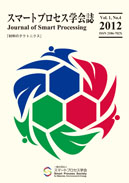Volume 11, Issue 2
Displaying 1-6 of 6 articles from this issue
- |<
- <
- 1
- >
- >|
-
Article type: Review Article
2022 Volume 11 Issue 2 Pages 40-44
Published: March 10, 2022
Released on J-STAGE: March 10, 2023
Download PDF (2948K) -
Article type: Review Article
2022 Volume 11 Issue 2 Pages 45-51
Published: March 10, 2022
Released on J-STAGE: March 10, 2023
Download PDF (6422K) -
Article type: Review Article
2022 Volume 11 Issue 2 Pages 52-57
Published: March 10, 2022
Released on J-STAGE: March 10, 2023
Download PDF (1830K) -
Article type: Review Article
2022 Volume 11 Issue 2 Pages 58-63
Published: March 10, 2022
Released on J-STAGE: March 10, 2023
Download PDF (864K) -
Article type: Review Article
2022 Volume 11 Issue 2 Pages 64-70
Published: March 10, 2022
Released on J-STAGE: March 10, 2023
Download PDF (5623K) -
Article type: Regular Research Article
2022 Volume 11 Issue 2 Pages 71-77
Published: March 10, 2022
Released on J-STAGE: March 26, 2022
Download PDF (2678K)
- |<
- <
- 1
- >
- >|
